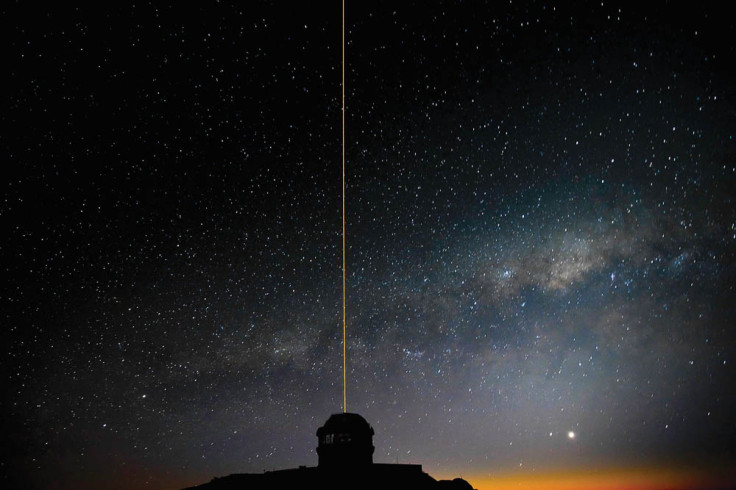Perseid Meteor Shower 2013: How ‘Celestial Pollution’ Lets Astronomers View A Clearer Picture Of The Universe
The Perseid meteor shower is an exciting event for stargazers and astronomers alike. While many will look at the sky to view hundreds of potential asteroids, astronomers will be able to view a clearer picture of the universe thanks to the Perseid’s “celestial pollution.”

Sodium left behind by the Perseid meteor shower will prove to be beneficial for the research efforts of astronomers, Gemini Observatory reports. The Perseids is a result of Earth traveling through the debris left behind by the comet Swift-Tuttle. The celestial pollution is the result of meteors burning up in the atmosphere. The gases are not harmful to humans, nor do they affect the Earth in any adverse way.
The sodium gas left behind in the Earth’s atmosphere, approximately 60 miles from the planet’s surface, can be heated by lasers, exciting the sodium molecules to create artificial stars. Chad Trujillo, head of Gemini Observatory’s Adaptive Optics program, said in a statement, “We can make it glow by using a sodium laser to excite this sodium and produce temporary, artificial stars wherever we like. Believe it or not, there aren’t enough stars in the sky for astronomers!”

The artificial stars are called laser-guide stars and can be used by astronomers to create extremely sharp images of the universe. Normally, for a telescope, the only light available is collected from stars but that light, which has travelled billions of years, could be greatly distorted. Having a bright, fixed-point of light allows astronomers to calculate any turbulence or distortion and correct in within a computer, Air & Space reports. By correcting atmospheric distortion, a telescope can produce better images.
With larger, and more advanced, telescopes currently in development, laser-guiding systems have also advanced. With the potential to view more of the universe, distortion will be even more problematic to astronomers. Trujillo explains, “As telescopes get bigger, they must look through a wider column of air. The wider the column of air, the more turbulence in the air will distort the observed light. Using laser-guide stars gives us a reference so we can correct for that turbulence and see things with amazing clarity from the ground.”

The Gemini Multi-conjugate adaptive optics System, or GeMS, can shoot five lasers into the air, creating an artificial “constellation” of stars, allowing astronomers to better correct for any distortion. The Perseid meteor shower will peak between Sunday and Monday and can best be viewed during the predawn hours.
© Copyright IBTimes 2025. All rights reserved.






















